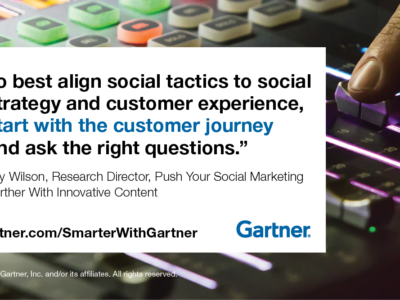Providers should use their social efforts to improve preparation and uncover customer insights.
Social networking has made it easier than ever before to connect with people you know and their extended network. This has given rise to the concept of social selling – using social connections to reach out to prospective customers via these networks. Unfortunately, many sellers become too focused on the selling, and risk being perceived as anti-social.
“Rather than focus social selling efforts on ‘contacting more’ or ‘contacting faster,’ a more effective method is to think of social selling first as a path to improved preparation and engagement,” said Derry Finkeldey, research director at Gartner. “Once that has been achieved, subsequent, more targeted sales interactions can also be made using social connections.”
Develop a Mutual Relationship
“Social anything” is about developing a mutual relationship and requires give and take. When considering whether to establish a relationship, salespeople should ask themselves if they can offer this contact something of value over time, rather than a one-off transaction. Successful social sellers need to be willing to continue to drive engagement and foster the relationship regardless of whether there is a current sales opportunity or not. For this to work, the relationship needs to be authentic.
Since many organizations also have social programs for marketing and service, sales representatives need to understand how to leverage those efforts to help them engage. Content curation is a great way to start or join conversations. Identifying relevant content, then sharing it when appropriate, provides real value for participants.
Deepen and Prolong Engagement
As engagement deepens, the opportunity to move toward more of a true selling focus may arise. When it does, it is driven by the engagement and understanding that has developed between the customer and the social seller. Now, instead of talking about the product or service, the discussion is about how to address a business challenge and achieve a business outcome. In most situations, it will be welcomed since now you are selling within the scope of the valued-added relationship you have developed.
“Creating these relationships through quality engagement can have a multiplicative effect when you have provided value,” said Ms. Finkeldey. “It is natural to ask the customer if there are others they know that would be interested in the discussion. Those connections present new opportunities to prepare, engage and then sell – if appropriate. Best of all, these introductions start from a referral, which usually increases the willingness to connect since a context for engagement has already been established.”
Social selling is actually not about selling at all, at least not in the traditional sense. Instead, it enables provider sales teams to be more prepared, to add value that makes prospective customers interested in engaging and then to make more traditional sales interactions more relevant. The network effect of social amplifies these efforts, making it easier to establish more connections whenever value is exchanged.
Gartner clients can learn more in the report “Tech Go-to-Market: Focus ‘Social Selling’ for B2B Sales on Preparation and Engagement, Not Selling.” This report is part of the Gartner Special Report “Future of IT Sales: Understanding Buyer Readiness”, which explores the new IT selling environment.
For more articles visit Smarter with Gartner website.










